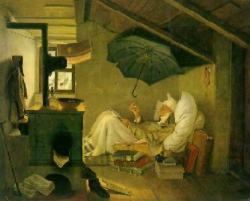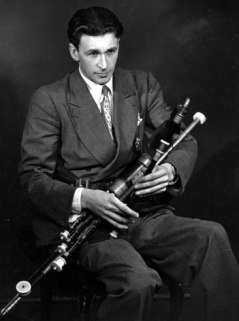|
T:-)M's Night Shift Music in Motion, Seamus Ennis Diary, Dublin’s Other Poetry |

|
FolkWorld Issue 41 03/2010; Book Reviews by Walkin' T:-)M
|
T:-)M's Night Shift Music in Motion, Seamus Ennis Diary, Dublin’s Other Poetry |

|
Music and standstill is a rather silly concept. Music is always in motion, pushing forward, passing by, crossing borders. So musicians do.
 Bernd Clausen, Ursula Hemetek, Eva Sæther, European Music Council (eds.), Music in Motion - Diversity and Dialogue in Europe. Transcript Verlag, 2009, ISBN 978-3-8376-1074-1, 438 S, €34,80. |
|
As follow-up to their Ireland's Other Poetry, Dublin’s Other Poetry: Rhymes and Songs of the City,
is an anthology of humorous songs and poems, i.e. light and bawdy verses, parodies and satires
(see also FW#39).
All entries share a common purpose - a belief that life may be quite good fun.
The ones gathered here from mostly amateur poets were written over four centuries,
including famous blind street-singer Zozimus,
Brendan Behan (with the popular "Old Triangle"),
Mick Fitzgerald (FW#39),
and the traditional "Spanish Lady" in glorious six verses.
This collection leads you all over the city, from Trinity College
to Sandymount Strand, from Donnybrook Fair to the Grand Canal.
Of course, you will not pass by Guinness brewery at St James' Gate:
John Wyse Jackson & Hector McDonnell, Dublin’s Other Poetry - Rhymes and Songs of the City .
Lilliput Press,
2009, ISBN 978-184351161-8, 145pp, €12.00
(irelandsother-poetry.spaces.live.com)
|
Just to give you some examples. Ursula Hemetek (University of Music and Performing Arts, Vienna) discusses the Roma anthem "Gelem Gelem", a traditional melody from Yugoslavia, which has been adopted as kind of a national anthem by the first Roma World Conference in London in 1971. Hemetek wonders: To what extent can an anthem that is supposed to be the symbol of a nation also be international, and how can a people who have no territory be a nation? "Gelem Gelem" has some rather surprising lyrics, compared to typical national anthems:
|
Gelem, gelem lungone dromeja, maladilem sukare romeja ... I have walked a long way, and I have met a beautiful Rom ... |
The lyrics address the legend of travelling, and in addition the cohesion of the clan: general values of the Roma culture worldwide. Differentiation is carried out through the other parameters. The dialect of Romanes used indicates which Romani group this is, as does the realisation of the music. There is no Romani music per se. There are a large number of different styles, which include Sinti jazz, Flamenco or Hungarian gypsy music. The Romani anthem is performed in such a way as the style of the musicians' demands, or depending on what they think will suit their audience. It is simply a piece of music. Its use as a national symbol is only taken half-seriously. Roma have never stood up or put their hands on their heart on those occasions, or developed the sort of solemnity and emotionality that is often attached to national symbols.
Another example from the book. Alenka Barber-Kersovan (Arbeitskreis Studium Populärer Musik, Hamburg) explores the ways on which Balkan Beat came into western Europe (FW#41). First of all, she points out that Yugoslavia embarked on a self-determining way into socialism after the political breakaway from Moscow.
Popular music enjoyed considerable political support: Rock'n'Roll and its derivatives acted as an optimistic sound of modernisation, accompanying the accelerated industrialisation and urbanisation of the country. Another political reason for the promotion of the Western popular culture was the attempt to diminish the existing cultural differences between the the various ethnic groups. The cradle of Yugo Rock was the Bosnian capital Sarajevo. It was a lively, tolerant, and inspiring urban centre, in which Serbian, Croatian, and Muslim traditions merged in a creative atmosphere of intense cultural exchange, and local musical idioms amalgamated with international pop music into a new hybrid genre. The offical founder of Yugo Rock is generally considered to be Bijelo dugme [White Button], which was formed in the beginning of the 1970s and mingled hard rock riffs with regional folk songs.This musical paradise ended when Civil War started in the 1990s.
As severe tensions between different national and ethnic groups increased from the mid-1980s onwards, the individual music scenes started to close themselves into republican or ethnical borders. There were even some cases of musical cleansing. Example is the sevdalinka, a Bosnian urban love song, which was traditionally performed and listened to by all three ethnic groups, the Serbs, the Croats, and the Muslims. Under the tense political conditions, however, the sevdalinka was appropriated by the Muslims as the musical symbol of their cultural identity, and was consequently banned from the musical repertoire of other ethnic groups.
Not only did Yugoslavia as a governmental unit cease to exist but also its name. Thus, Yugo Rock became metaphorically as well as de facto deprived of its original territorial anchorage and found a new home in diaspora. In the West, Goran Bregovic, the former bandleader of Bijelo dugme, first raised awareness with the music for the films of his compatriot Emir Kusturica. Later, he toured with his Wedding and Funeral Band. There are also a number of groups which were formed in Western Europe and which are permanently stationed there. One of the most prolific is the Sandy Lopicic orkestar from Graz. The repertoire consists of traditional songs in new arrangements and original pieces. Gatherings [which] became known as Balkan Beat Parties started to attract an international audience. Further activities have included the release by the newly founded Eastblok label of the CD BalkanBeats [FW#41]. The repertoire was enlarged by a broad spectrum of music from other socialistic countries. If these parties originally served as a kind of survival training for refugees, the growing participation of an international public has changed the character of these events and their value as entertainment has now started to prevail.
Martin Greve (Rotterdam Conservatoire) had observed the music in the European-Turkish diaspora. It all began in the 1960s, when many central European states began to recruit workers from Southern Europen states including Turkey.
Turkish workers called their families to follow them. From the 1970s onwards, a European Turkish family culture began to develop. The first Döner Kebab take-away shops, Turkish grocery shops and small handicraft enterprises emerged. A Turkish entertainment market developed with music restaurants and gazions [music nightclubs]. At the beginning, amateurs played and sang folk music for the guests but as the years passed semi-professional and professional musicians took over these jobs. Professional commercial musicians were also in high demand for Turkish weddings. Many Turkish migrant associations offered lessons in folk dance or the baglama (a long-necked lute, sometimes also referred to as saz, literally instrument). The longing for a faraway home found its expression in Arabesk, a new hybrid music style with sentimental and fatalistic lyrics that combined Anatolian folk music with Western, Turkish and Libanese pop.

en.wikipedia.org/wiki/ www.iol.ie/~ronolan/ www.seamusenniscentre.com |
Cross-cultural musical encounters have been witnessed since the 1980s and have fallen mainly within the frame of world music. Two technical problems constrain these musical co-operations. Firstly, language: Both Anatolian folk music and Ottoman Turkish art music are primarily vocal music. Turkish is very different to Indo-European languages and difficult to learn. The second challenge is the different tone system, which makes exact intonation for non-Turks very difficult. Moreover, only a few European-Turkish musicians are active in world music and many are actually percussionists.
There are 25 essays, including theoretical introductions and thematic approaches (e.g. on Jewish music by Philip V. Bohlman -> FW#26). A highly interesting chapter is about music from African immigrants in Europe, another cover topics such as bhangra, Chilean dance and taranta. It is a very huge collection, and almost anybody should find something interesting. All contributions are in English, the preface is also in French, German, Slovenian, Turkish and Italian.
Séamus Ennis (1919–1982) was always on the move too. Going to the Well for Water is a translation by Rionach ui Ógáin (University College Dublin) of Séamus' diaries, when he was fulltime collector of music and song with the Irish Folklore Commission. Séamus was first and foremost an uilleann piper. He was hired in 1942 for he had the necessary qualifications as a musician, singer and Irish speaker.
 Ríonach uí Ógáin (ed), Going to the Well for Water - The Seamus Ennis Field Diary 1942-1946. Cork University Press, 2009, ISBN 978-1-85918-437-0, 614pp, €49.00 |
His diary begins:
Friday 3.7.42 I left Ballinasloe at one o'clock in the afternoon. I went to Oranmore, where I spoke to an old man. He sang 'Is í Nóirín Mo Mhian' [Nóirín Is My Desire] for me. His rendering of the air was so bad that I was unable to recognise a single note, but I deciphered one verse that I had not heard previously:I slept last night in Castlebar;That was all he had that was of interest to me. I continued to Galway and stayed at Micheál Ó hOisín's house in Salthill. He plays the fiddle and the pipes. I spent the night playing the whistle with him (that I had with me), the fiddle, and the pipes ...
At the edge of your bed and you did not hear me.
I stretched out my arm to kiss your mouth,
You were not there and all I had was the blanket and myself.
His field diary originally written in Irish is covering 98 weeks. Most of it in County Galway, but also Tory Island, Arainn and Doolin in Co. Clare. Séamus is describing his day-to-day work, the people he met and the material he gathered. He gets an old air, "Lord Mayo", from fiddler Frank Cassidy (e.g. listen to the recording of Lúnasa -> FW#5). He meets Niallaí Ó Baoill, Con Cassidy and Joe Ó hÉanauí, well-known names in traditional music circles. His favourite source is Joe's cousin Colm Ó Caodháin with 200 items alone. He also has a chance encounter with Pat Russell, the youngest of three brothers still remembered for their music (FW#40).
Sunday 30.9.45 It was a fine, quiet, sunny morning. I went to Mass on McGrath's bicycle and went for a swim after a little while, when there was sufficient water at the pier. I went out to the wall after dinner, where I heard gentle, fine music and I saw five or six lads lying on their stomachs on the roof of the swimmers' bathing boxes. I settled down beside them and there were two people beneath us in one of the boxes. They were playing tin whistles as sweetly as you could wish to hear. One of them was Pat Russell (c. 24), the same man who had the tin whistle at Ó Maoldhomhnaigh's house on Friday night. I wrote around six tunes from them in the two hours of music that followed and Pat told me that he had heard them from his mother's lilting.
Certainly, this is special interest and not for the general public,
but it would be a great pity if collecting dust in any library.
Séamus Ennis himself went on to Radio Eireann, recording
Willie Clancy (FW#41)
and Micho Russell (FW#40) for the first time.
In 1975, he moved to Naul in Co. Dublin to a place
which had once belonged to his grandparents.
The Séamus Ennis Cultural Centre is situated adjacent to this site.
|
To the German FolkWorld |
© The Mollis - Editors of FolkWorld; Published 03/2010
All material published in FolkWorld is © The Author via FolkWorld. Storage for private use is allowed and welcome. Reviews and extracts of up to 200 words may be freely quoted and reproduced, if source and author are acknowledged. For any other reproduction please ask the Editors for permission. Although any external links from FolkWorld are chosen with greatest care, FolkWorld and its editors do not take any responsibility for the content of the linked external websites.
